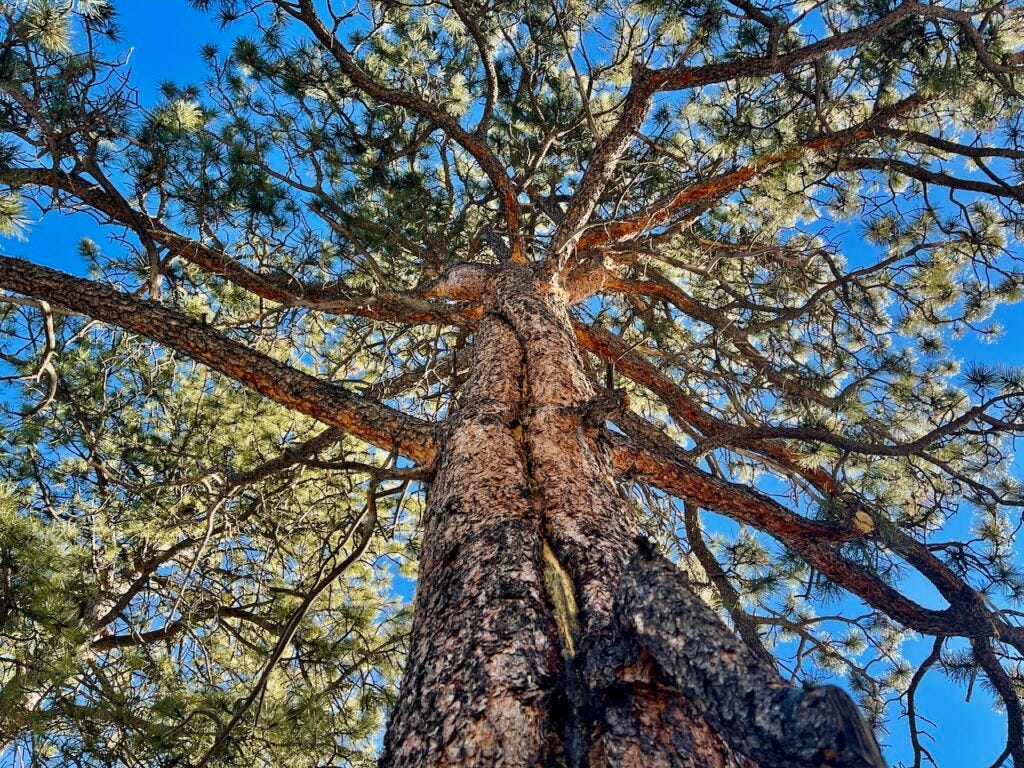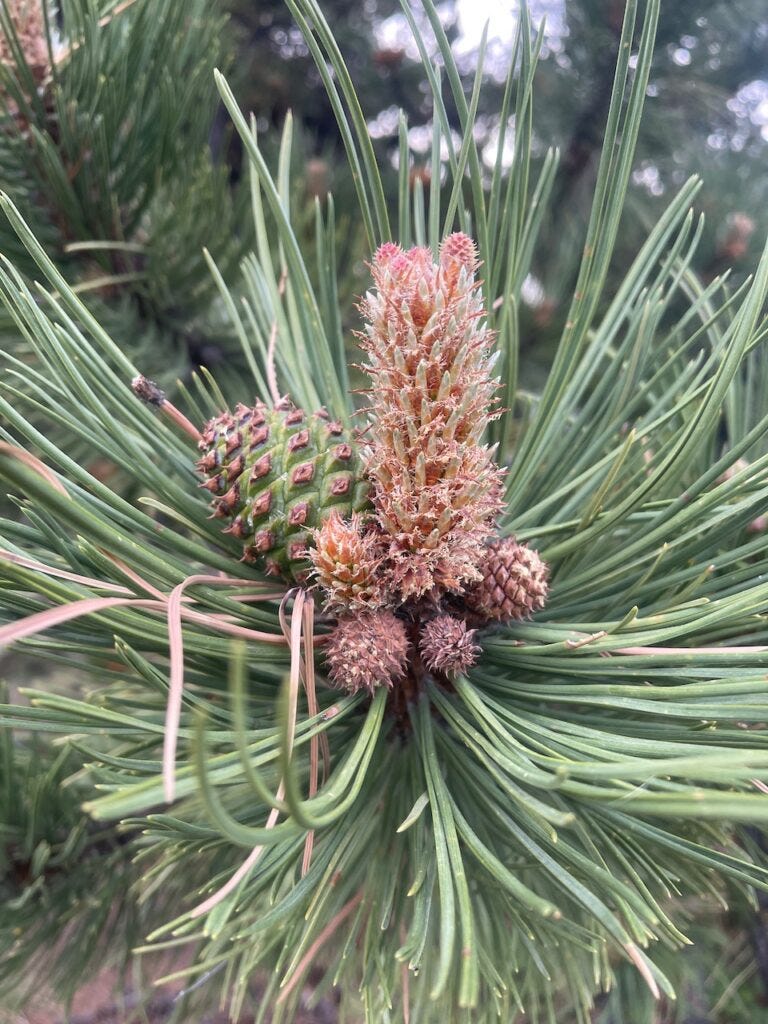Ponderosa Pines
There is one consistent type of tree here in these woods. One tree is so ubiquitous that it creates the structure of the forest like the framework of a house. Here, that tree is the Ponderosa Pine. The Ponderosa has such a wealth of history, unique growth, connection with the land, and the critters that flourish in it, that it will take far more than one post to lay out the significance of this tree.

Ponderosas like to have some space around them and the old, mature trees stand like sentinels of their territory. They grow best with a more open, park-like land with lots of space for deer, elk, moose, bear, and people to move about.
The smaller, young trees have a dark to black bark in small shingles and are often called ‘Black-jacks’. Gaining height as they age, lower branches shed, or ‘self-prune’ to continue their upward reach in a broad spiral. As the tree ages, at about 100 years old, the trunk begins a transformation of its small shingled bark for a smoother, orange-ish tone and large, flat shingles. Time has toughened them and they become more resilient, able to handle what used to be regular cycles of low-grade wildfires every 20-30 years. This orange bark provides the trees with an added resistance to weather, fungus, bugs, and fire allowing a tree to attain heights of 230 feet and higher and up to 400-600+ years old. The oldest Ponderosa, still living in Utah, is 940 years old.
The orange bark invites you to come take a sniff. Really! You will get the smell of butterscotch, vanilla, or caramel exuded in the tree’s resin.
Highly prized by the lumber industry for tall, straight trunks of strong wood, Ponderosa Pines provided the wood for the ravenous construction boom of the late 1800s, American Westward Expansion for gold, homesteads, railroads, and mining. The numbers are staggering, millions of trees were harvested annually with little regard for the age of a tree or the health of the forest. Technological advances in moving logs with flumes and river flows, and new saws increased the clear-cutting. Our own land is dotted with 2-foot-high stumps, evidence this area was logged 100-140 years ago. Our forest here today would be considered a ‘Century Forest’ since most of these trees are no more than 150-200 years old, averaging about 100 years. This is in contrast to an Old Growth Forest where the trees have not been harvested and can reach ages of many centuries old.
Some Ponderosas didn’t ‘make the cut’ though. Ponderosas are also known for their quirky twists and curves, splits, and splayed crowns. As they grow, as life’s strife and scars, perhaps fires, winds, animals, lightning, fungus, weather, shading, and other factors leave their mark on the tree’s growth, causing it to squiggle, bend, and split off. Lightning scars run the length of the tree, following its spiral growth down to the ground. In time, the tree seals the raw and burned wound with resin and bark, but the marking remains. Branches will make strange turns and even right angles. Many look as though someone, perhaps someone human, took an interest in the tree in its young years and caused the strange curves by manipulating its growth with rope and weights. Hmmmm. But that will be the subject of another entry.
These long-needled Sentinels interact with the Tassel-eared Abert squirrels, along with the myriad of animals, birds, insects, moss, lichens, fungus, and people, who rely on the trees, growing in their places, for food, nesting sites, shade, and protection. The Ponderosa is a ‘monoecious’ tree, a Greek word meaning ‘one house’, in other words, the tree creates both the male, pollen cones, loved by squirrels, and the female, seed cones, also loved by squirrels, but more work for the tasty seeds. I’ll dig deeper into the cycle of the pollen and seed cones in another entry. Suffice it to say, for now, this is a ‘tree of plenty’ for this forest and provides the framework structure creating an entire habitat system for all that live within it.
Sources:
Ponderosa: People, Fire, and the West’s Most Iconic Tree 2015, Carl E. Fiedler and Stephen F. Arno
Ponderosa: Big Pine of the Southwest, 2015, Sylvester Allred
Field guide to old Ponderosa Pines in the Colorado Front Range, https://www.fs.fed.us/rm/pubs/rmrs_gtr109.pdf
















